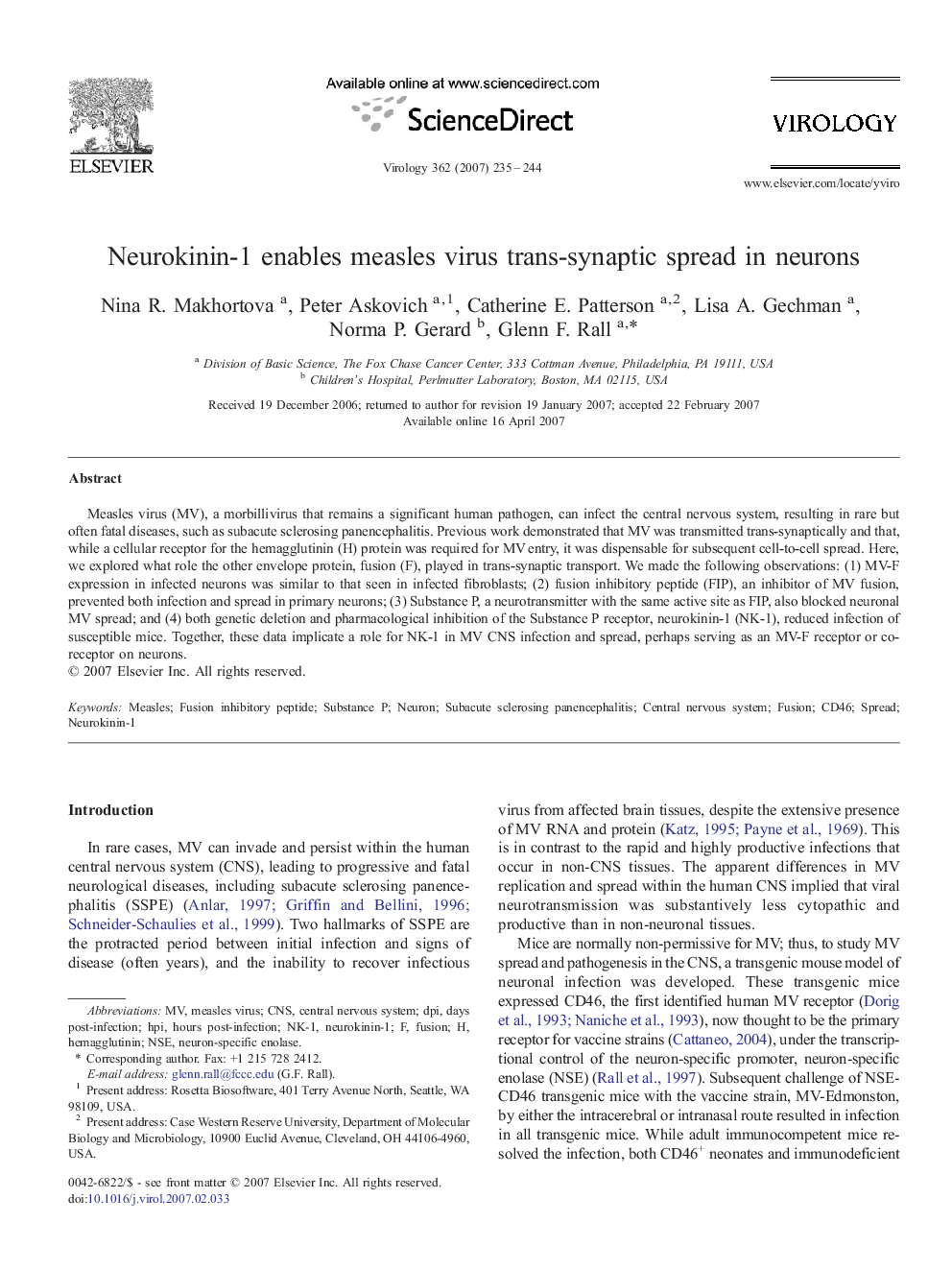| Article ID | Journal | Published Year | Pages | File Type |
|---|---|---|---|---|
| 3427430 | Virology | 2007 | 10 Pages |
Measles virus (MV), a morbillivirus that remains a significant human pathogen, can infect the central nervous system, resulting in rare but often fatal diseases, such as subacute sclerosing panencephalitis. Previous work demonstrated that MV was transmitted trans-synaptically and that, while a cellular receptor for the hemagglutinin (H) protein was required for MV entry, it was dispensable for subsequent cell-to-cell spread. Here, we explored what role the other envelope protein, fusion (F), played in trans-synaptic transport. We made the following observations: (1) MV-F expression in infected neurons was similar to that seen in infected fibroblasts; (2) fusion inhibitory peptide (FIP), an inhibitor of MV fusion, prevented both infection and spread in primary neurons; (3) Substance P, a neurotransmitter with the same active site as FIP, also blocked neuronal MV spread; and (4) both genetic deletion and pharmacological inhibition of the Substance P receptor, neurokinin-1 (NK-1), reduced infection of susceptible mice. Together, these data implicate a role for NK-1 in MV CNS infection and spread, perhaps serving as an MV-F receptor or co-receptor on neurons.
